As an eCommerce entrepreneur, you know that efficiency is one of the keys to success.
The more you can simplify your processes, the more time and resources you’ll have to focus on growth and profitability.
That’s where eCommerce automation comes in. In fact, 66% of small businesses say automation is essential for running their business.
With the right tools and strategies, you can save hours of work every week and reduce errors and delays.
You can also improve the customer experience. In this article, we will show you 4 ways to automate your eCommerce business that will transform how you work.
Whether you’re just starting out or you’ve been in business for years, these tips will help grow your eCommerce business.
So if you’re ready to take your eCommerce game to the next level, keep reading – you won’t want to miss this.

What is eCommerce automation?
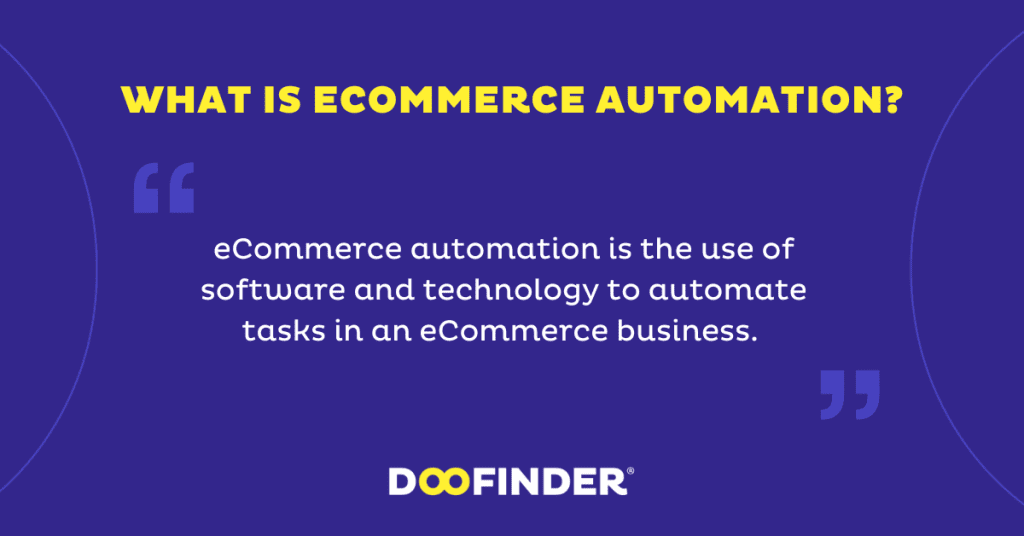
eCommerce automation is the use of software and technology to automate tasks in an eCommerce business.
It helps businesses save time and resources, reduce errors, and improve the customer experience.
Processes that can benefit from automation include order fulfillment, customer service, fraud reduction, and marketing.
4 eCommerce Automation Implementations
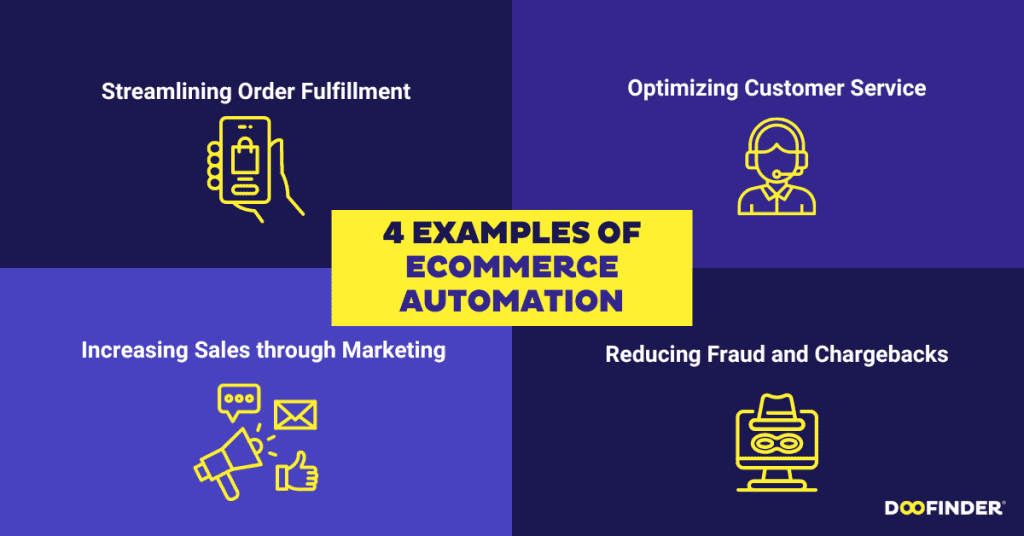
Running an eCommerce business, you know your focus should be growing your business instead of spending most of your time on tedious and repetitive admin tasks.
Automating your eCommerce business can free up your time and resources.
This frees you to pursue essential items that further your business growth.
Ready to automate your workflow and boost your productivity?
Here are some of the most effective ways to automate your eCommerce business:
1. Streamlining Order Fulfillment
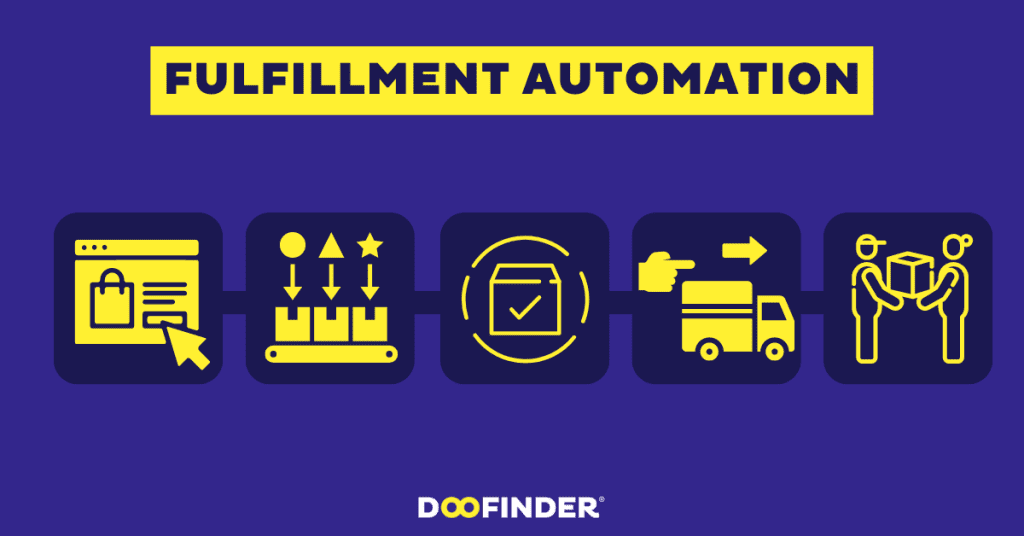
Managing orders and getting them delivered correctly is crucial to any eCommerce business.
One way to improve this is through eCommerce fulfillment automation.
Fulfillment automation uses technology to automatically manage and ship orders to customers.
This automation begins with integrating order management software into your eCommerce platform and warehouses.
The software routes the order to the nearest warehouse or fulfillment center with the items in stock.
Once the order details are in the system, robots known as ‘picker bots’ manage the process of finding and moving each item required.
They can move around the warehouse quickly, look up orders in real-time, and accurately retrieve items.
Once the order is complete, it moves along the automation line to be packed, labeled, and shipped.
The automation system will select the most cost-effective shipping carrier via real-time rate shopping before printing the label.
This strategy can save time and reduce human error in the order-picking and packing process.
Also, online automation tools can help you automate order entry, processing, shipping, and tracking.
These technologies let you focus on other important tasks and satisfy your customers.
In summary, leveraging eCommerce fulfillment automation can lead to more efficient order management, quicker order processing, and even reduced shipping costs.
It also lets you focus on other business areas while ensuring your customers receive their orders on time.
It is an effective way to simplify your operations while maintaining high customer satisfaction.
2. Optimizing Customer Service
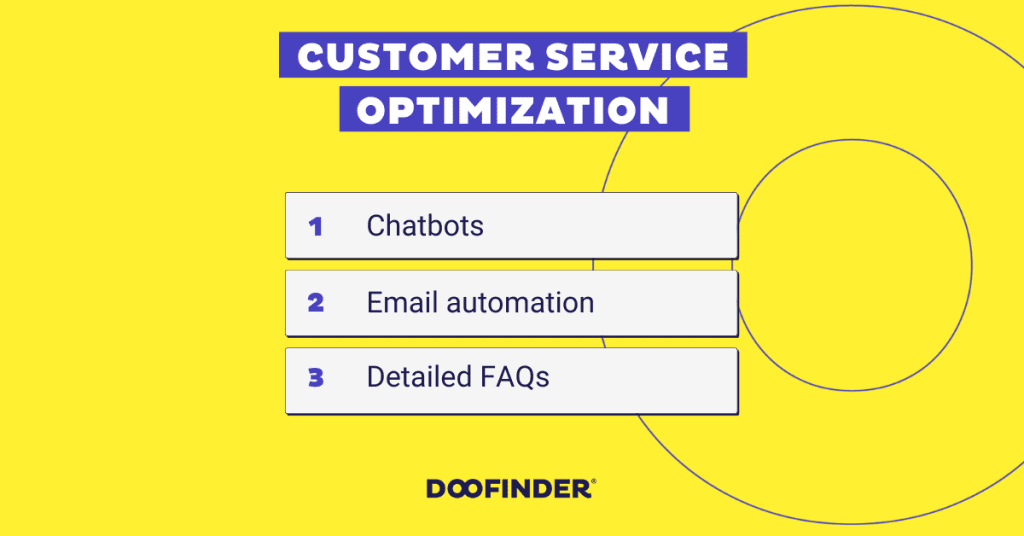
Customer service is a crucial component of any eCommerce business. How your business interacts with customers can make or break your reputation and affect your bottom line.
One way to optimize it is through customer service automation. This automation can simplify your customer inquiries, enhance customer satisfaction, and provide accurate solutions faster than a manual process.
Some examples of customer service automation include chatbots, email automation, and detailed FAQs. With chatbots, customers can receive real-time responses to their inquiries anytime.
This frees up the customer support team to handle more complex issues. Automated email campaigns can provide timely information, such as shipping updates and promotional offers.
These emails also aid customers who need help with their orders.
You can provide quick and accurate customer responses by using customer service automation. Because you have freed up your team to focus on more complex issues, you can save both time and money.
You’ll also provide an improved customer experience that can increase loyalty and positive word-of-mouth marketing.
3. Increasing Sales through Marketing
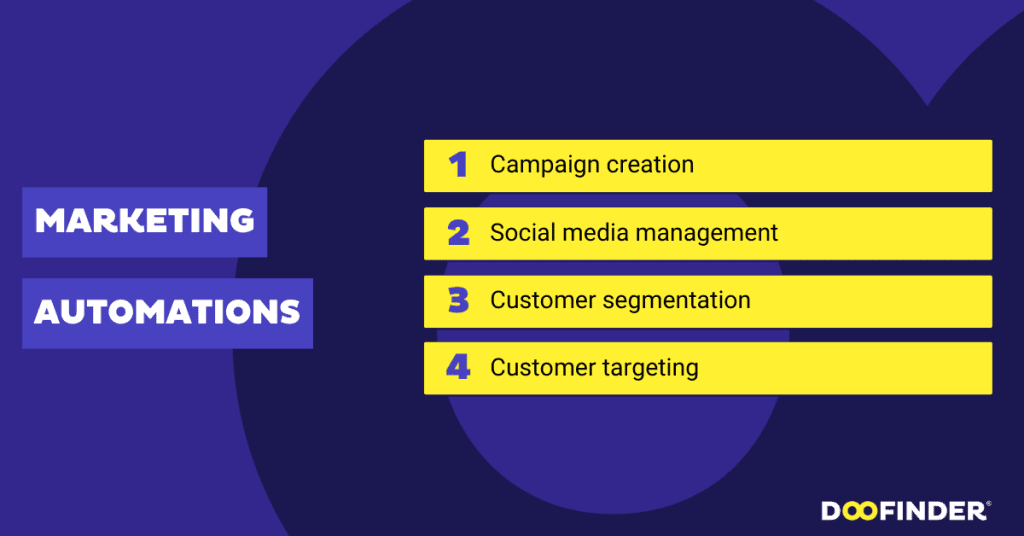
Marketing is a critical component of any eCommerce business. It enables you to build brand awareness, promote new products, and reach new customers.
One effective way to increase sales through marketing is through eCommerce marketing automation.
This involves using technology to automate repetitive tasks, such as campaign creation, social media management, and customer segmentation and targeting.
eCommerce marketing automation offers many benefits for businesses looking to grow their sales. It can help you save time, improve marketing efficiency, and increase revenue.
Automating your marketing processes can create a consistent brand message, boosting customer engagement. Engaged customers can improve your bottom line.
No matter the size of your business, marketing automation can help you compete in a crowded market by helping you reach your target audience.
It also allows you to track and analyze key metrics to optimize your campaigns. You can then make data-driven decisions to take your business to the next level.
4. Reducing Fraud and Chargebacks
Fraudulent transactions and chargebacks can impact the profitability and reputation of any eCommerce business. One way to reduce their occurrence and impact is through fraud automation.
Automated fraud prevention tools help identify real-time fraudulent transactions to prevent them from occurring.
These tools use advanced algorithms and AI to analyze patterns and behaviors. These tools will then assign fraud scores that indicate the risk level of a transaction.
AI also learns from past data to improve accuracy when identifying and preventing fraudulent activities. These fraud prevention systems can be integrated with payment gateways.
This lets businesses set up a secure payment processing system they can trust.
Disputing chargebacks is a time consuming and often frustrating process for eCommerce businesses. Automation offers solutions to reduce the burden of such repetitive tasks.
Automated chargeback management tools can reduce the workload of your chargeback teams by handling time-consuming and repetitive tasks.
These tasks include researching chargeback codes, gathering evidence, and responding to inquiries. Automating these tedious tasks allows you to focus on more critical items and experience a more efficient workflow.
By using a fraud automation system, you can reduce the rate of fraudulent transactions and decrease your chargeback rates.
You can also automate some of the tasks in the dispute process. These can result in significant savings on chargeback fees. And you can protect your business from fraud-related expenses.
What are the benefits of eCommerce Automation?
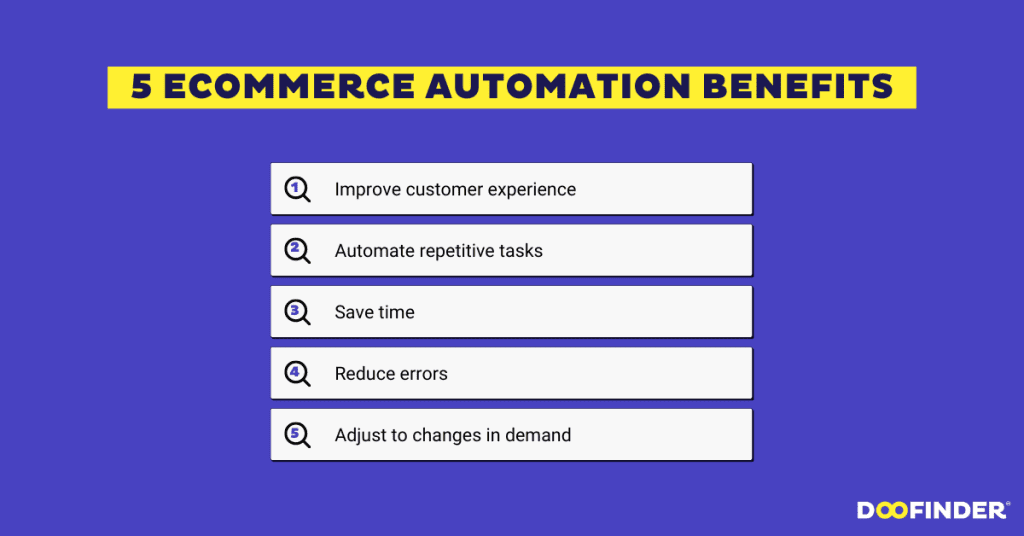
eCommerce automation has many benefits that can positively affect the growth and success of your business.
The right tools and strategies can help you save time, reduce errors, and improve the customer experience. This kind of optimization can lead to increased productivity, efficiency, and profitability.
With eCommerce automation, you can automate repetitive tasks and integrate multiple platforms.
You can also reduce the time spent on manual tasks, such as order fulfillment, customer service, marketing, and fraud prevention. At the same time, you can improve their quality and effectiveness.
Also, automation can bring scalability and flexibility to your business. With the right tools, you can adjust to changes in demand, supply, and customer needs.
This flexibility allows you to experiment with new ideas, launch new products, and identify growth opportunities you may not have otherwise considered.
In summary, eCommerce automation can help you achieve higher levels of productivity, efficiency, and customer satisfaction.
It’s a must-have strategy for any business owner looking to grow their enterprise and stay ahead of the competition.

FAQs
How do you automate online shopping?
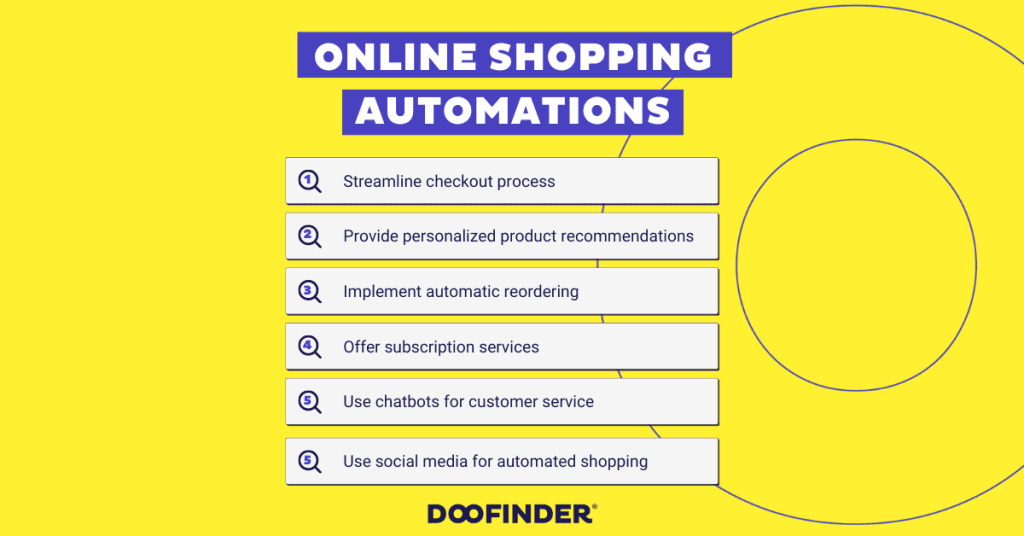
You can automate online shopping by using eCommerce automation tools and software.
Here are some ways you can make the online shopping experience more automated for your customers:
- Streamline checkout process: Simplify the checkout process by allowing customers to save their payment and shipping information. Offer guest checkout as an option to expedite the process for new customers.
- Provide personalized product recommendations: Use machine learning algorithms to offer personalized product recommendations based on the customer’s past purchase history, search queries, and browsing behavior.
- Implement automatic reordering: Set up automatic reordering for frequently purchased items, allowing customers to set up recurring orders for products like pet food, toiletries, and household supplies.
- Offer subscription services: Offer subscription services for products that customers regularly purchase, such as beauty products, food items, or supplements.
- Use chatbots for customer service: Implement chatbots to provide quick and efficient customer service, answer frequently asked questions, and help customers navigate your website.
- Use social media for automated shopping: Enable customers to shop directly from social media platforms like Instagram and Facebook by setting up shoppable posts and implementing buy buttons.
By automating the online shopping experience for your customers, you can improve customer satisfaction, increase sales, and reduce shopping cart abandonment rates.
However, it’s important to ensure that your automation tools are reliable, secure, and meet customer privacy expectations.
What is an example of eCommerce automation?
An example of eCommerce automation is using chatbots to provide customer service.
Chatbots are AI-powered programs that simulate conversation with users, allowing them to quickly and efficiently answer common questions, help customers navigate the website, and assist with purchases.
Another example of eCommerce automation is implementing abandoned cart email campaigns.
When a customer adds items to their cart but doesn’t complete the purchase, an automated email can be sent to remind them of the items they left behind and encourage them to complete the purchase.
The email can also offer incentives like a discount code or free shipping to entice the customer to complete the purchase.
Conclusion
eCommerce automation offers immense benefits to businesses of all sizes. But, despite its advantages, implementing automation can be daunting, especially if you don’t have the right technology or tools.
Luckily, plenty of eCommerce automation solutions, such as Doofinder, are available to help businesses get started with automation.
Doofinder is a powerful product discovery platform that uses AI-based search algorithms to optimize product search and browsing experiences on eCommerce sites.
By using Doofinder, you can automate their search capabilities. This can improve your personalization efforts and increase customer satisfaction.
So, if you want to improve your eCommerce game and automate your online shopping experience, Doofinder is worth checking out.








